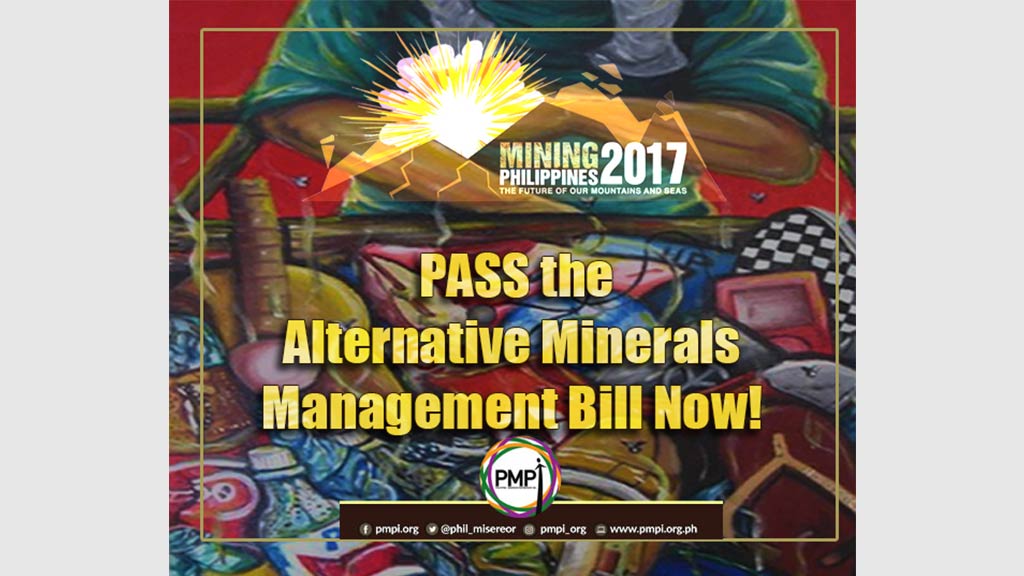At Best, Rhetorical. At Worst, Farcical.
This year, the MINING PHILIPPINES Conference – an annual event organized by the Chamber of Mines of the Philippines (COMP) – is without a doubt the group’s attempt to defend its image by choosing to highlight once again the existence of that mythical creature called “Responsible Mining” in the Philippines. According to the group, exemplary mining operations in the country practices”…go beyond mere compliance”.
We remember, in 2010, this same rhetoric was the focus of a conference organized by big mining companies operating in the Philippines called COREMin2. The event held in Dapitan, Zamboanga culminated with the publication of the “Dapitan Declaration” – a manifesto of mining companies’ promise of adherence to basic human rights principles, stewardship of the environment, sustainable mining practice, good governance, and national patrimony. COREMin2 is the Coalition for Responsible Mining in Mindanao whose members include TVI Resource Development Phils. Inc. Sagittarius Mines Inc.; Philex Gold Philippines Inc., and Apex Mining Co., Inc.
In short, since 2010, mining companies were already trying hard at grasping the ethos of “Responsible Mining”. In fact, the manifesto indeed said it GOES BEYOND COMPLIANCE, but, as the old adage go “ACTION speaks louder than WORDS.”
With this year’s theme “Enhancing the Strategic Position of Minerals and Metals in the Global Landscape”, we still ask, ‘How about the affected communities?’ We cannot forget their ACTIONS: TWO YEARS after the Dapitan Declaration, Nicua Mining Corporation operating in MacArthur, Leyte caused large fish kill in Lake Bato due to the release of mine wastes. A month after, Philex Pacdal Mines leaked 20 Million MT. of mine tailings affecting Balog and Agno river systems in Benguet and Pangasinan. This affected the San Roque Dam which supplies water to agricultural irrigation and power generation for Northern Luzon. November of the same year, Citinickel Mines and Development Corporation’s Toronto nickel mine operating in Narra, Palawan caused silt spill affecting 6.8 hectares of agricultural lands.
We must not forget as well, that the “Marcopper Mining Disaster” happened, and until now the environment has yet to be rehabilitated and communities living and dependent upon it to be compensated for the damage caused by the malpractice of Placer Dome and Marcopper Mining Company. Right now, the local government of Marinduque, communities and people’s organization such as Marinduque Council for Environmental Concerns (MaCEC) have tried extracting accountability especially from Placer Dome but still to no avail.
Currently, Nickel Asia’s Hinatuan Mining Corporation (President and CEO of Nickel Asia now sits as the new Chairman of COMP), is in Manicani and for many times have attempted to remove the remaining stockpiles they have over excavated from the island in the name of environmental hazard prevention despite strong oppositions from Manicani residents. But the same company was suspended due to several violations while in operation in 2002 by then Secretary of DENR Heherson Alvarez and the suspension was not lifted since.
This year, the mining industry’s strategic communications will be, and as always, an attempt at saving their image. They focus their discussion, for each and every International Mining Conference organized by the Chamber of Mines of the Philippines to go beyond compliance, which does not necessarily translate to actions that uphold their past declarations on Responsible Mining. The more sinister part is, it seems they want us all to forget those devastating mining mishaps.
We challenge the Chamber of Mines of the Philippines to change their way of doing business and to comply, at the very least, on the set of rules and standards for mining in the Philippines which they themselves lobbied for via the Mining Act of 1995. But, to be true to their rhetorics of “beyond compliance” means abandoning the Mining Act of 1995 in favor of a new law. The industry’s image, protecting the environment, contributing to sustainable development, and developing linkages towards national industrialization can only happen under a different mining regime that will start with the passage of the Alternative Minerals Management Bills now currently pending in the House of Representatives.

